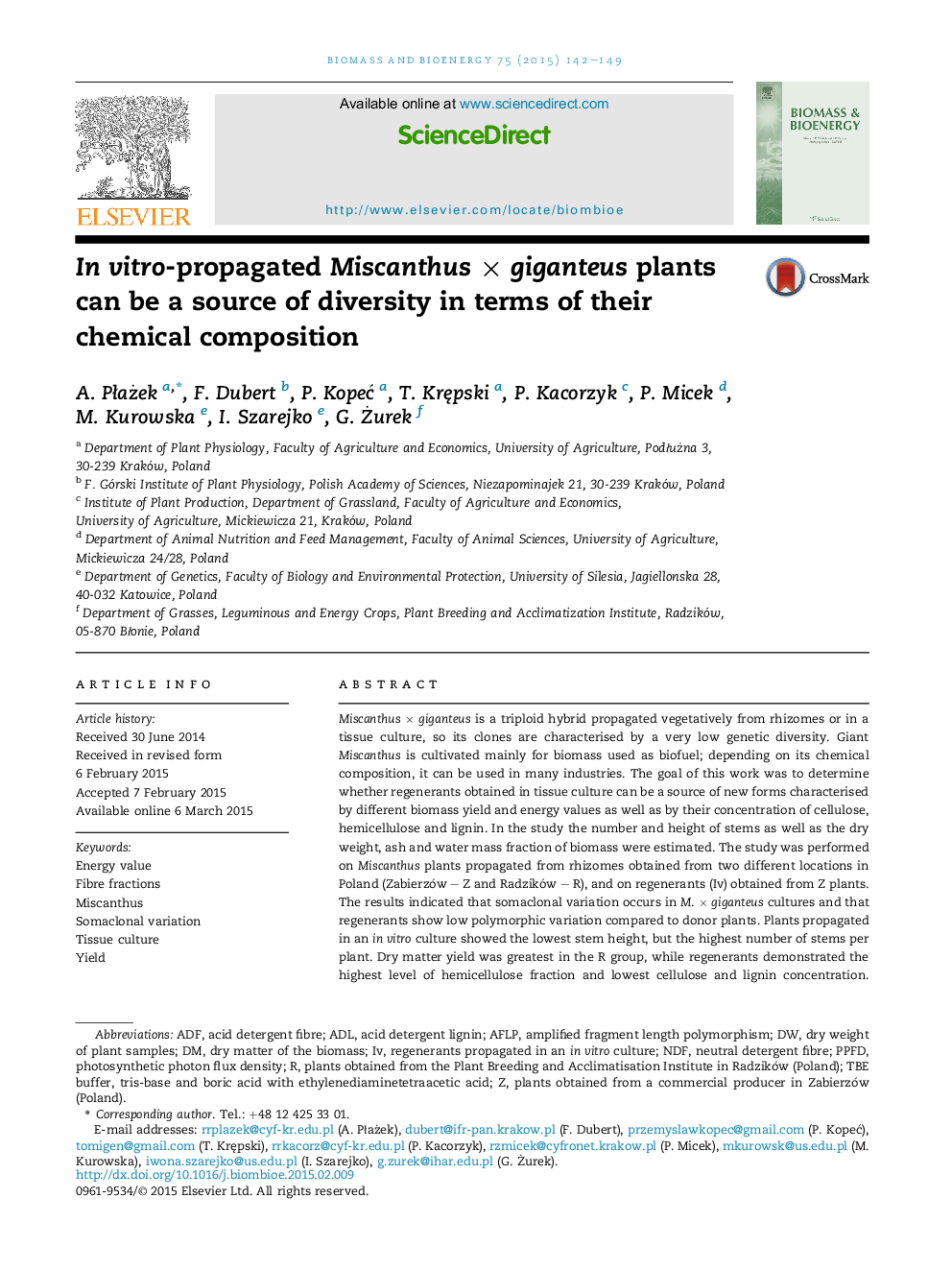| Article ID | Journal | Published Year | Pages | File Type |
|---|---|---|---|---|
| 676745 | Biomass and Bioenergy | 2015 | 8 Pages |
•Polymorphic differences were found between Miscanthus plants propagated in vivo and in vitro.•Plants propagated in vitro could be a source of new Miscanthus forms.•Regenerants differ from donor plants in respect of morphological traits.•The in vitro regenerants demonstrate higher hemicellulose concentration than donor plants.
Miscanthus × giganteus is a triploid hybrid propagated vegetatively from rhizomes or in a tissue culture, so its clones are characterised by a very low genetic diversity. Giant Miscanthus is cultivated mainly for biomass used as biofuel; depending on its chemical composition, it can be used in many industries. The goal of this work was to determine whether regenerants obtained in tissue culture can be a source of new forms characterised by different biomass yield and energy values as well as by their concentration of cellulose, hemicellulose and lignin. In the study the number and height of stems as well as the dry weight, ash and water mass fraction of biomass were estimated. The study was performed on Miscanthus plants propagated from rhizomes obtained from two different locations in Poland (Zabierzów – Z and Radzików – R), and on regenerants (Iv) obtained from Z plants. The results indicated that somaclonal variation occurs in M. × giganteus cultures and that regenerants show low polymorphic variation compared to donor plants. Plants propagated in an in vitro culture showed the lowest stem height, but the highest number of stems per plant. Dry matter yield was greatest in the R group, while regenerants demonstrated the highest level of hemicellulose fraction and lowest cellulose and lignin concentration. Energy value was the highest for Z plants, but Iv plants showed energy values on the same level as those of R plants. The data suggest that in vitro-propagated plants may be a source of new Miscanthus forms.
